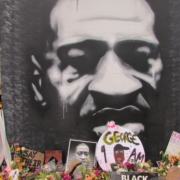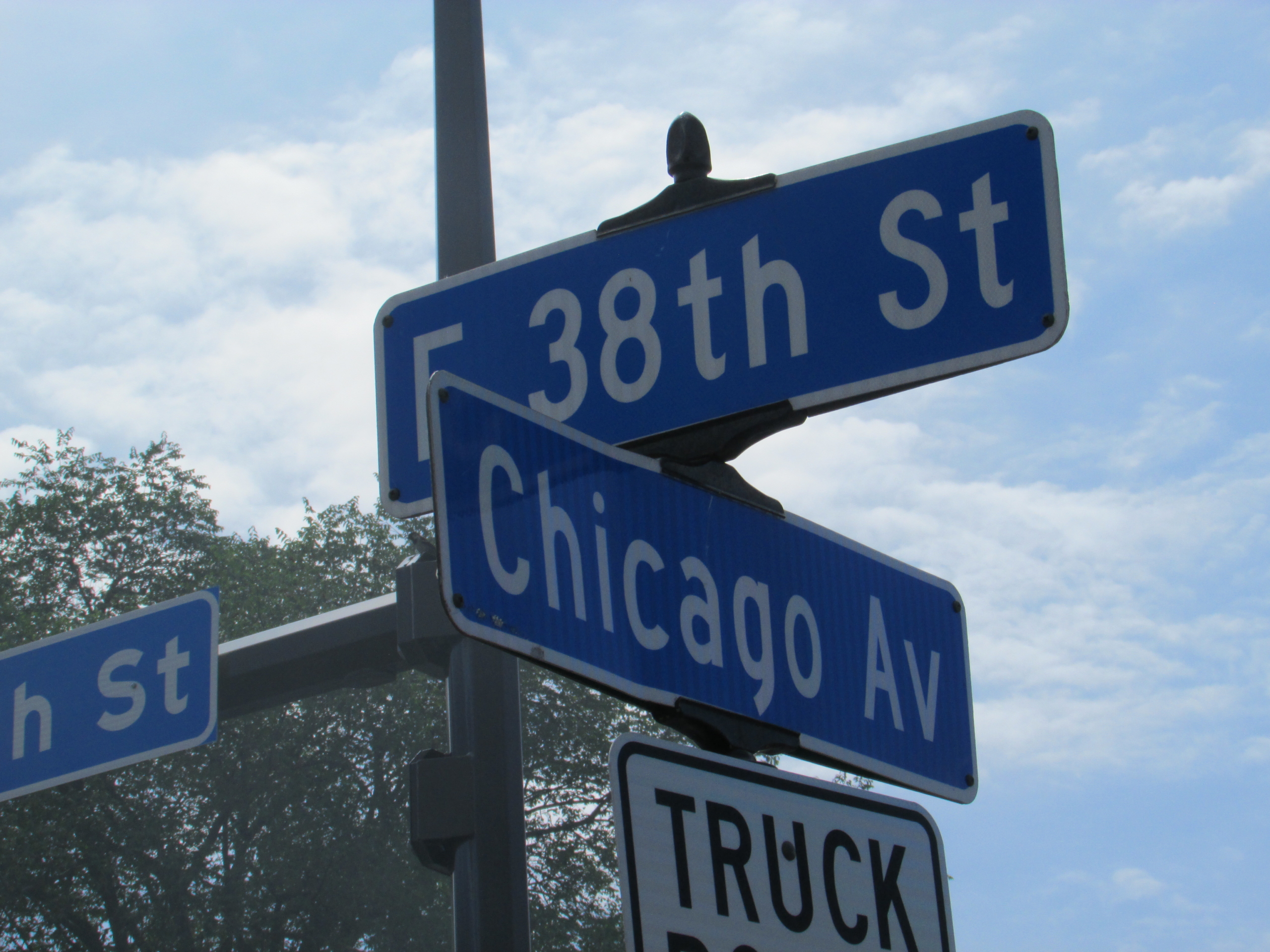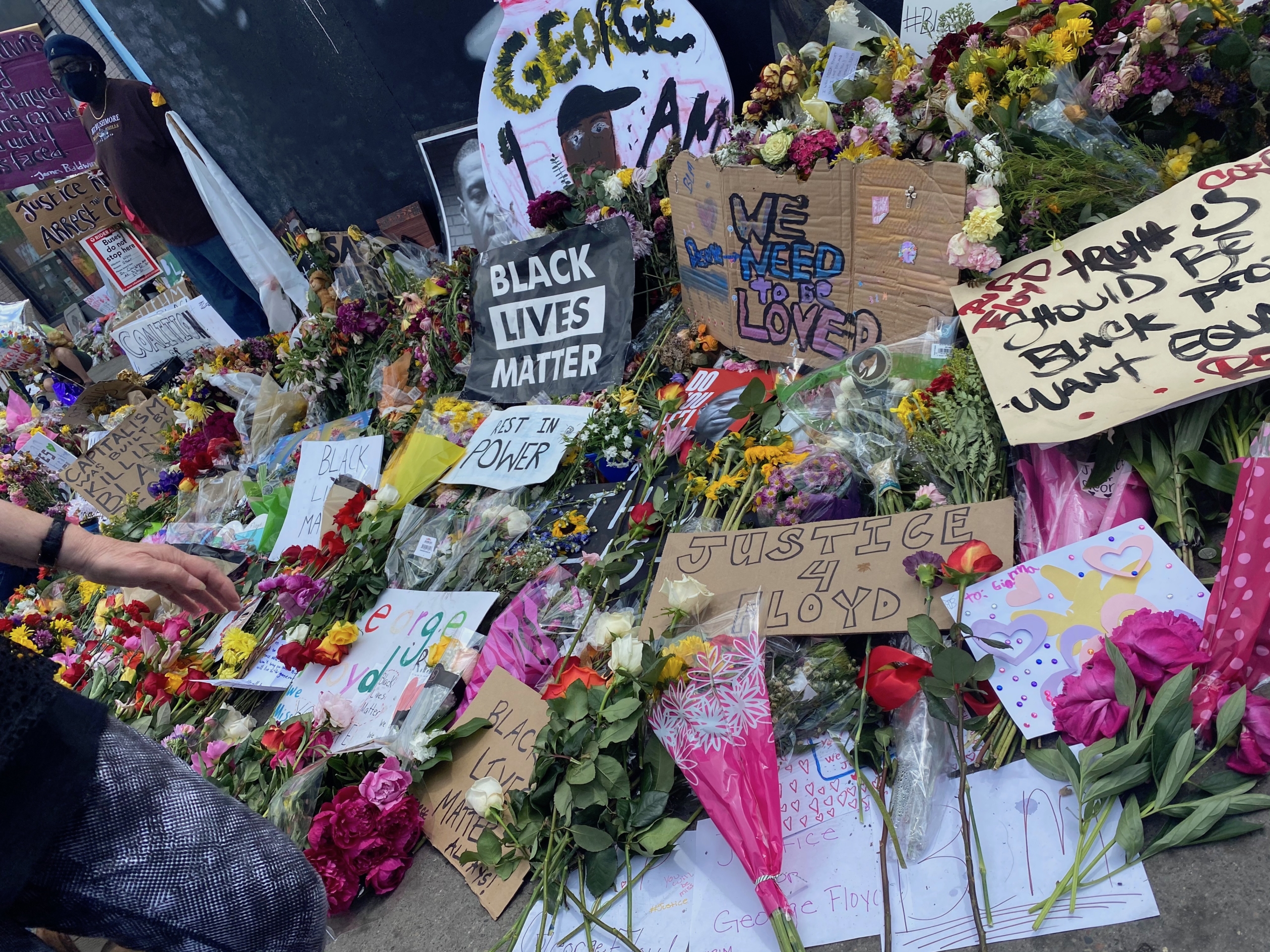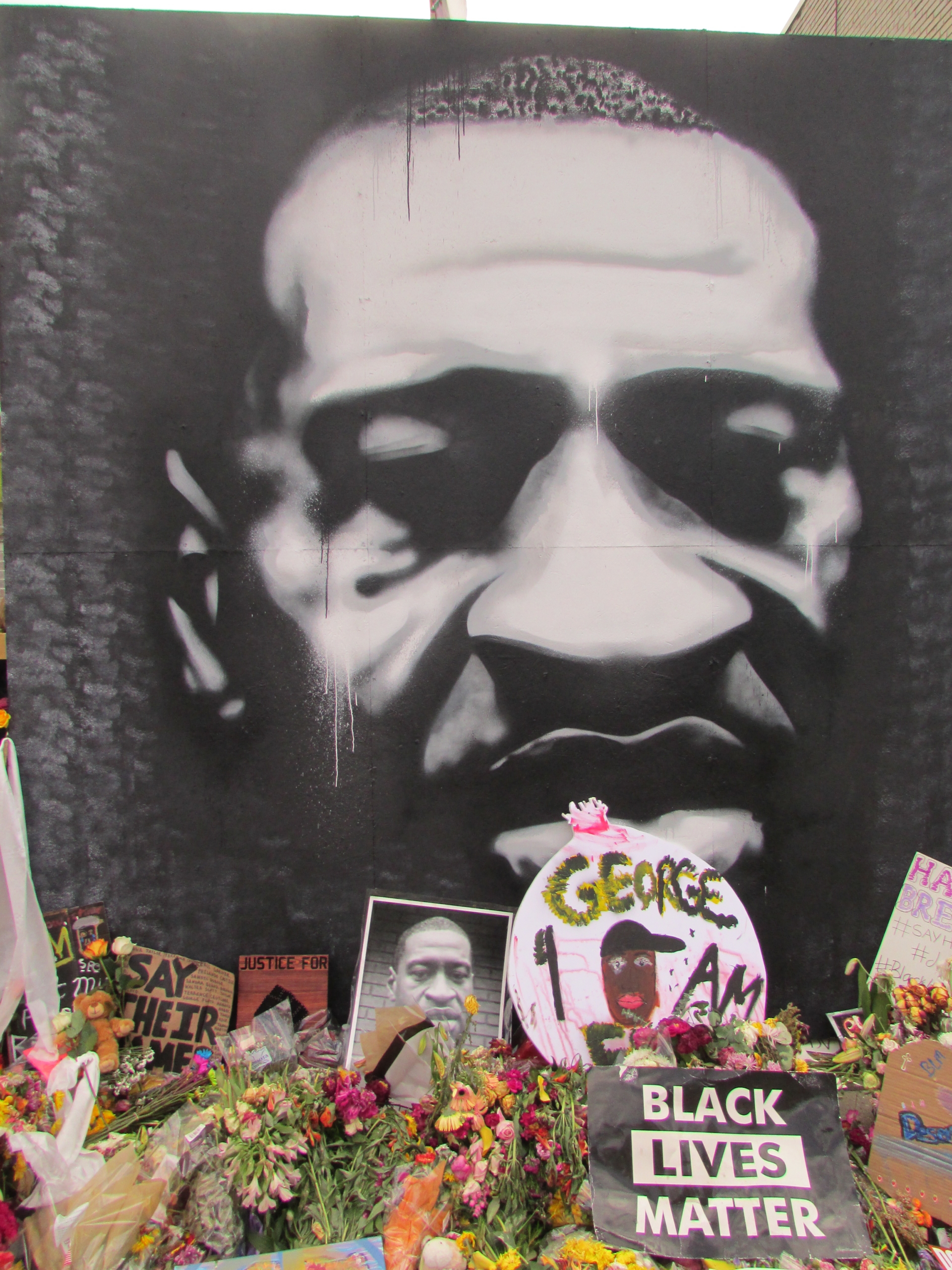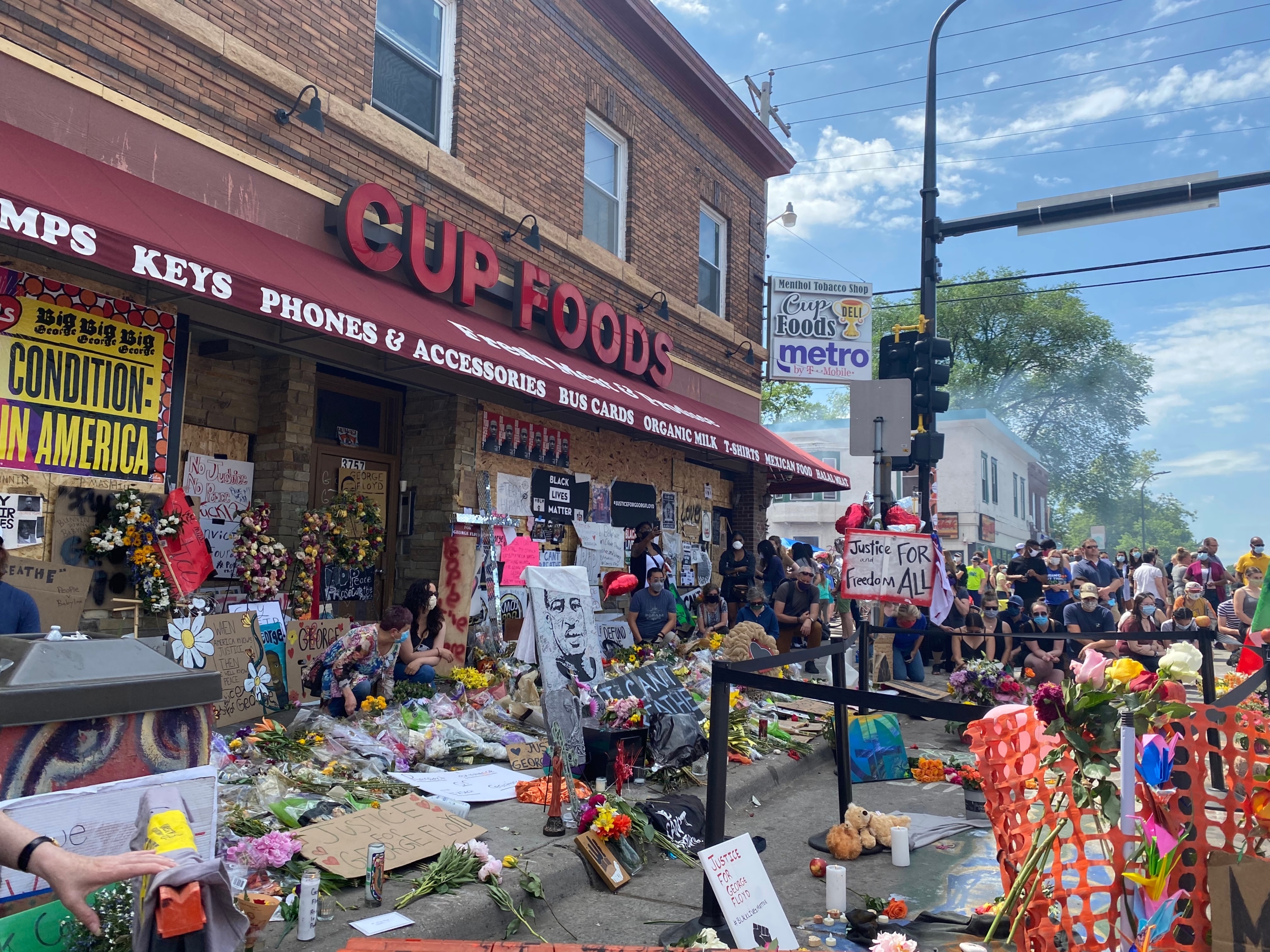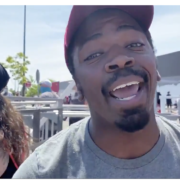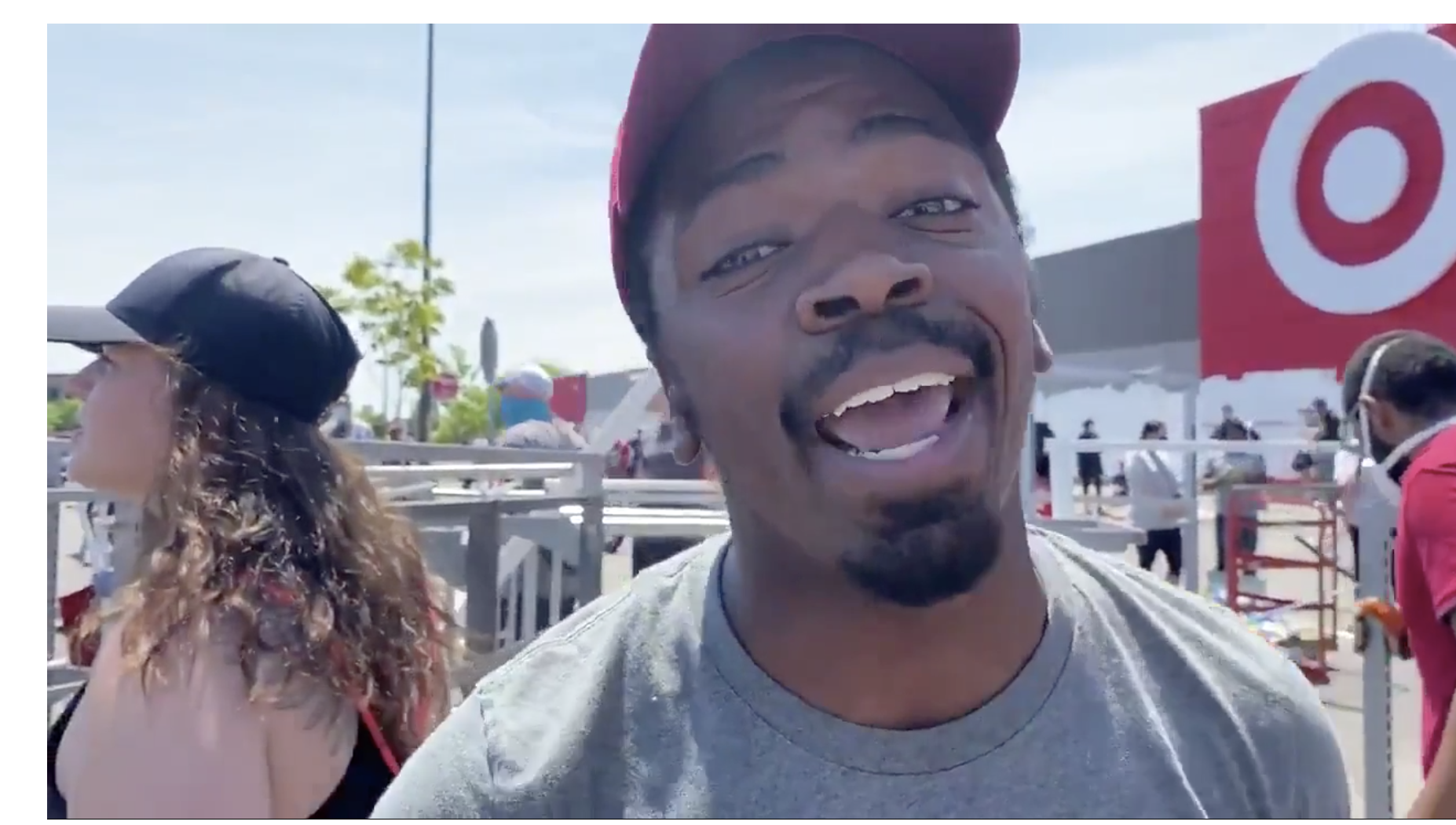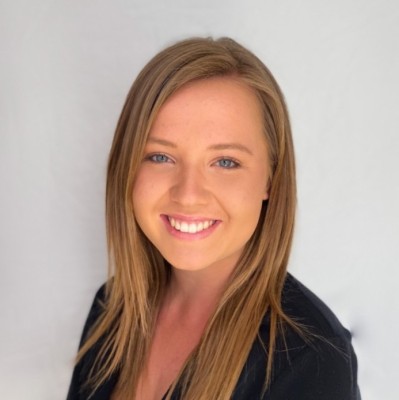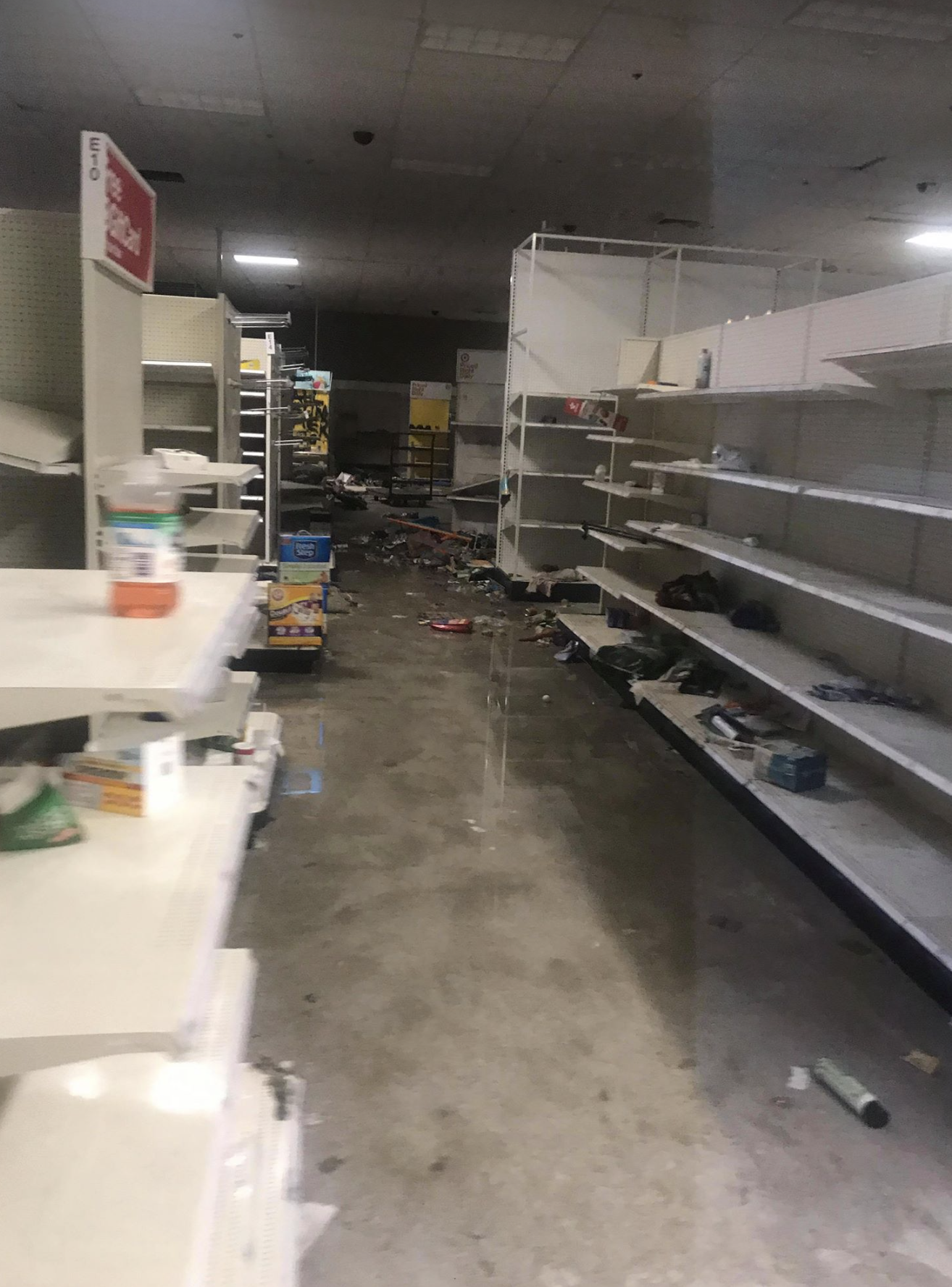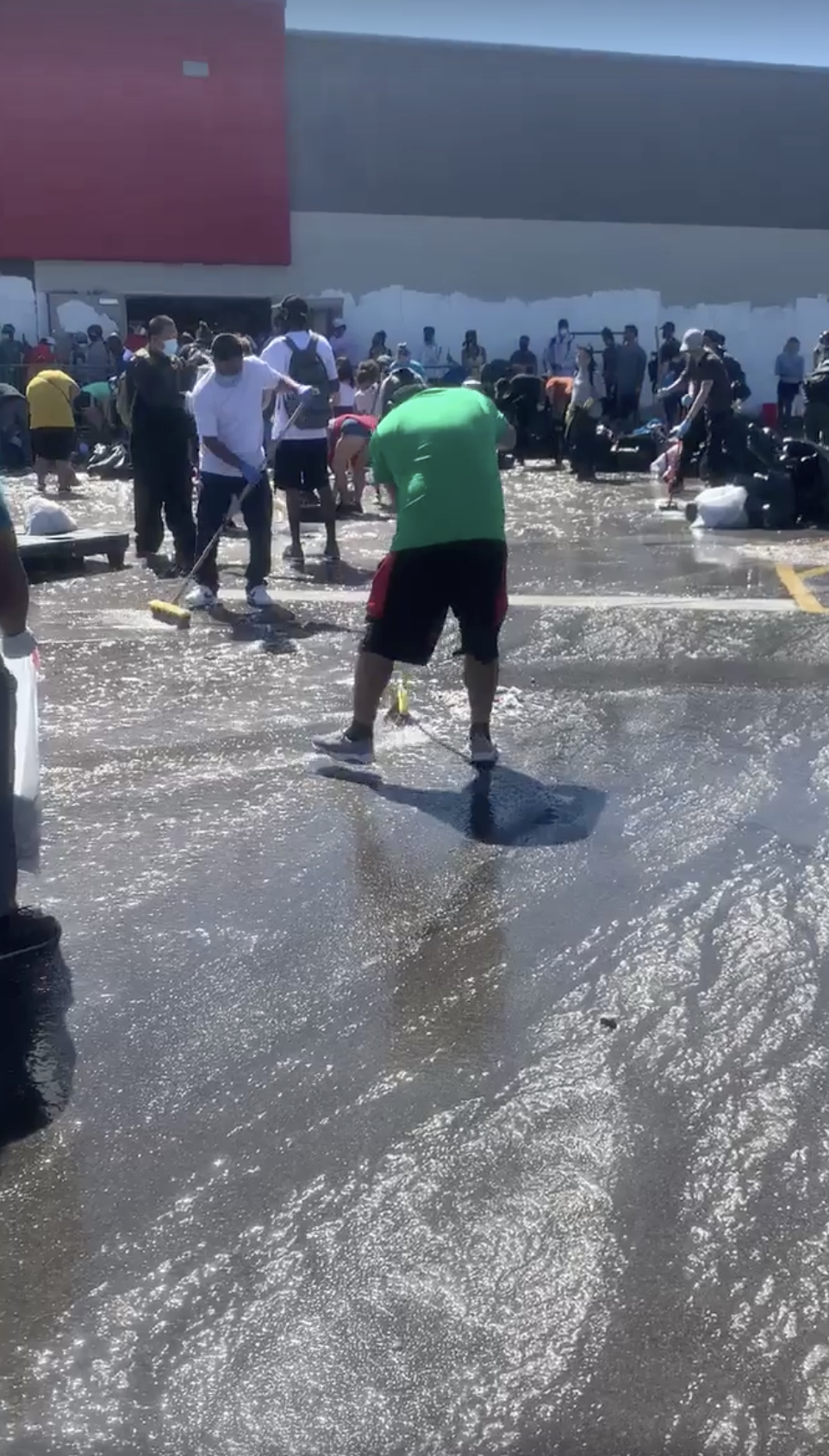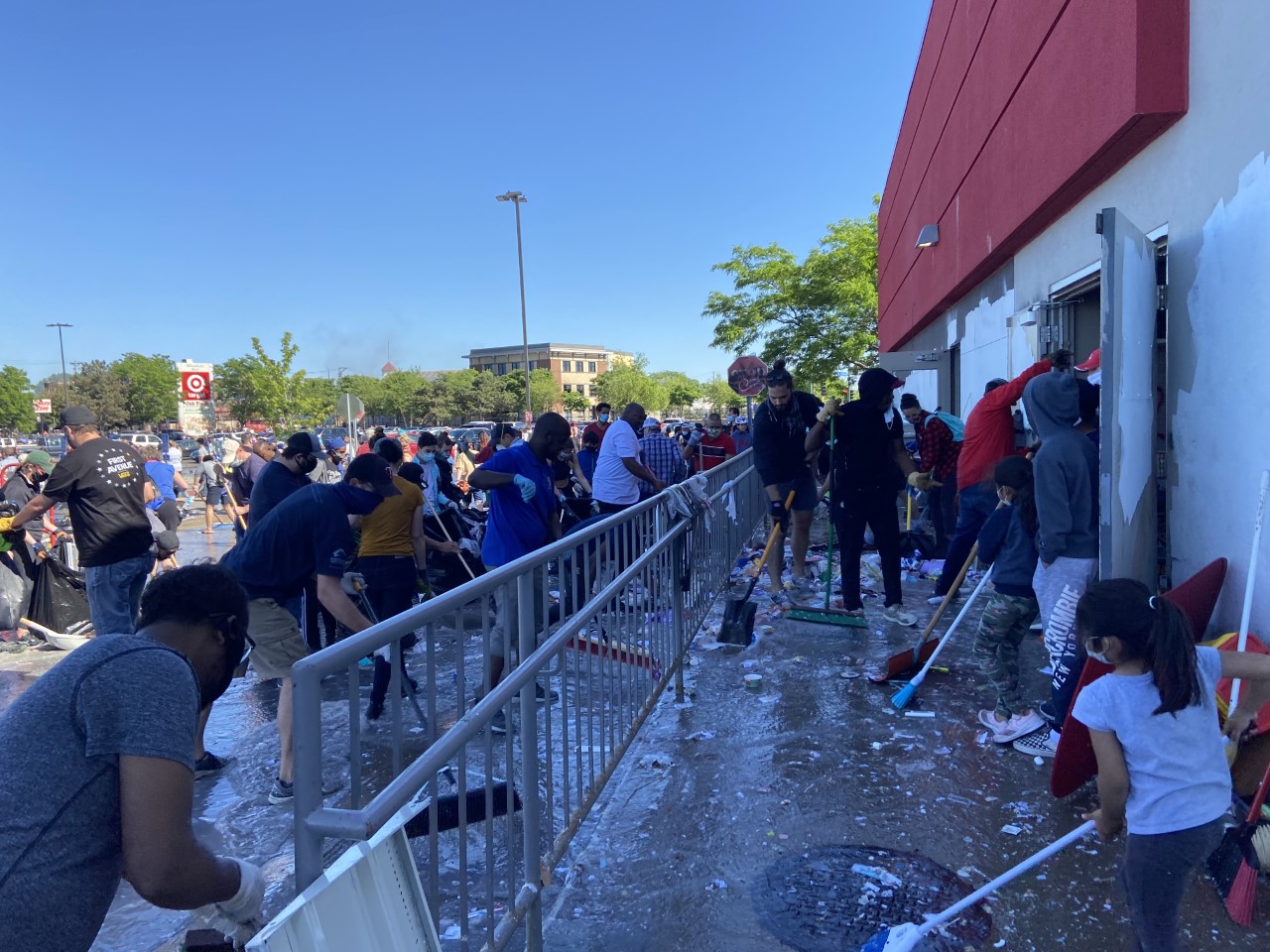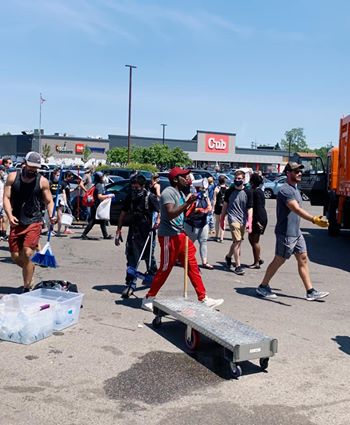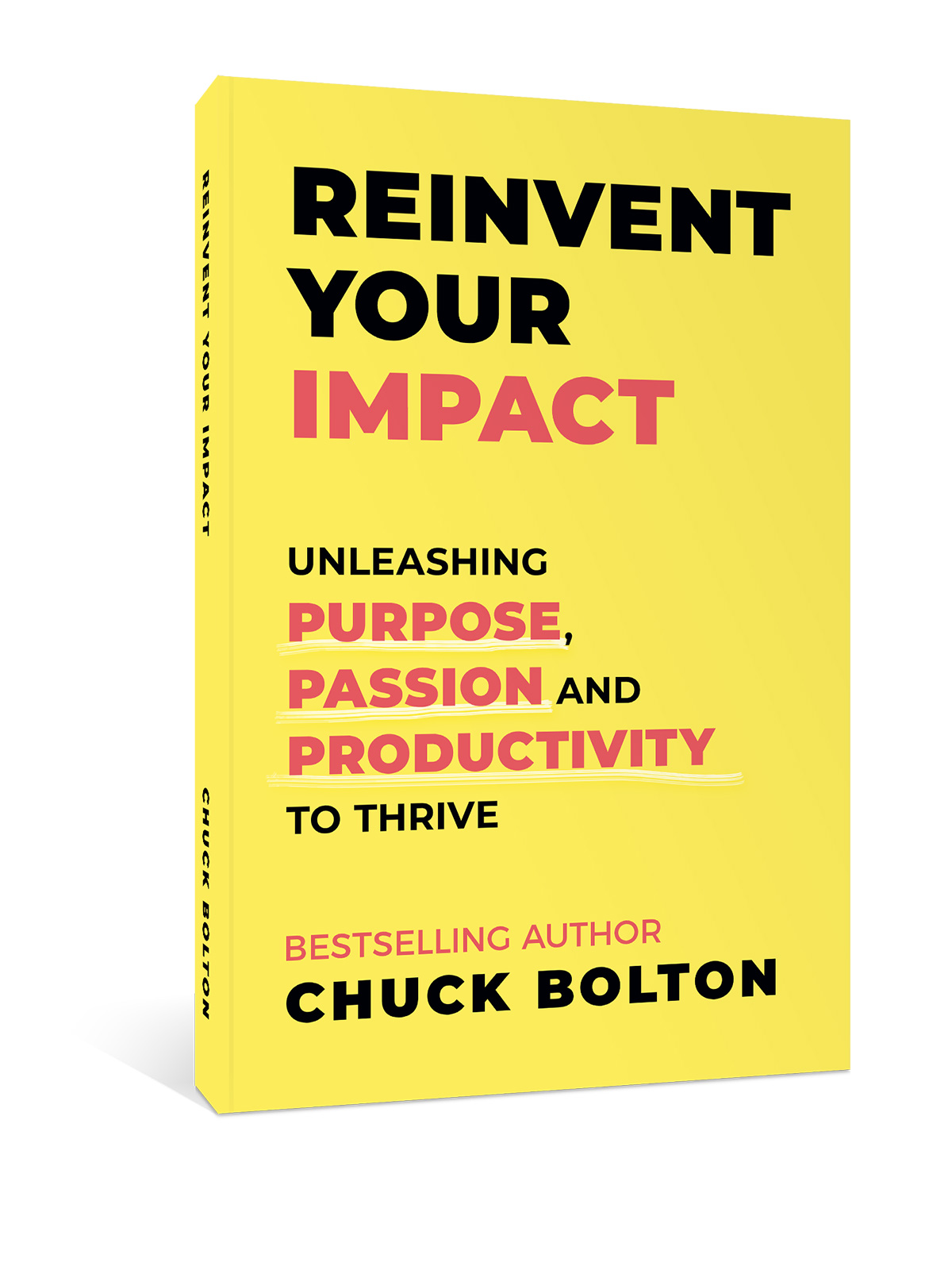The George Floyd Protests Have Already Changed Society – And it’s Just the Beginning!
My wife, Mary, and I visited the makeshift memorial honoring George Floyd last Saturday in south Minneapolis.
We viewed the memorials and the signs in front of the now famous Cup Foods at the intersection of E. 38th Street and Chicago Ave. A church youth group arrived on the scene and the youth pastor led us all in an 8:46 countdown, the time ex-Minneapolis police officer Derek Chauvin’s knee was on the neck of George Floyd during his murder.
We wondered what it must have been like to suffer as George Floyd did, while he narrated his own death? We wondered about the fear he must have felt as he suffered and had his very life breath suffocated out of him? We wondered what type of monster Derek Chauvin must be, to do what he cruelly did, torturing and taking another human’s life? We wondered why the three other police officers did not intervene, even physically pulling Chauvin off of the handcuffed Floyd, while he continued kneeling on George’s neck? We wondered how people who were sworn to uphold the law, to protect the citizens of Minneapolis, could have participated in a brutal murder?
Our time at the memorial was deeply moving. As we slowly and silently walked to our parked car, Mary looked at me, with tears in her eyes, and behind her facemask, she uttered one word. “Enough!”
Enough!
We’ve had enough.
Americans have had enough.
People of color have experienced racial injustice and systemic inequities across the US for four hundred years. Enough. Enough of seeing black Americans suffering at the hands of the criminal justice system and of hundreds of years of systemic racism. Enough of the police brutality. Enough of the injustice. Enough of the hazardous environmental risks black Americans face in their communities. Enough of lousy education and healthcare in inner cities. Enough of the discrimination in employment. Enough of the discrimination in housing and lending. Enough of the other systemic laws, policies, practices, biases and behaviors that prevent people of color from participating in the America that middle-class white people enjoy.
While the country experiences the pandemic of COVID-19, it also suffers from a pandemic of racial injustice. For one, we’ll hopefully have a vaccine for the cure. For the other, there will never be a vaccine, but that doesn’t mean we should not pursue a cure.
If the murder of George Floyd is not the tipping point for changing the racial oppression that exists, what could possibly be? The time is now. This is America’s wake up call.
The good news: the death of George Floyd and the ensuing protests have already started changing our society – and it’s just beginning.
When George Floyd was eulogized by the Rev. Al Sharpton at his funeral on Tuesday, June 9, 2020, he described George as “an ordinary brother from Houston’s housing projects who nobody thought much about”, which makes his central role in a generational movement that much more powerful.
“God took the rejected stone and made him the cornerstone of a movement that’s going to change the whole wide world,” Sharpton said.
“Your family is going to miss you George, but your nation is going to always remember your name. Because your neck was one that represents all of us, and how you suffered is how we all suffer,” he added.
Truer words have never been spoken, Reverend Sharpton.
Younger brother Rodney Floyd said, “If he was told he would have to sacrifice his life to bring the world together, and knowing him, I know he would’ve did it.” Source 1: CNN, The Rev. Al Sharpton remembers George Floyd as an ‘ordinary brother’ who changed the world, Eric Levenson, Gregory Lemos and Amir Vera, June 9, 2020
George Floyd’s 6-year-old daughter Gianna, sitting on the shoulders of George’s boyhood friend, ex-NBA player Stephen Jackson, smiled in a video that has now gone viral and said, “Daddy changed the world.”
After two weeks of largely peaceful protests in response to the murder of George Floyd, it is becoming clearer that the Black Lives Matter movement is upending the way many white Americans view policing in this country.
“Ladies and gentlemen, we’ve got to deal with the denial of the promise of this nation to so many people for so long,” Joe Biden, the Democratic presidential candidate said. “It’s about who we are, what we believe, and maybe most importantly, who we want to be.”
Biden called on Americans to look through Gianna’s eyes and question why racial injustice exists.
“Looking through your eyes, we should also be asking ourselves why the answer is so often too cruel and painful,” he said. “Why, in this nation, do too many black Americans wake up knowing that they could lose their life in the course of just living their life? Why does justice not roll like a river or righteousness like a mighty stream? Why?”
“Ladies and gentlemen, we can’t turn away. We must not turn away. We cannot leave this moment thinking, we can once again turn away from racism,” said Biden.
It looks like attitudes are changing in America.
Rev. Al Sharpton said, “When I looked this time and saw marches where, in some cases, young whites outnumbered the blacks marching, I know that it’s a different time and a different season.”
On Monday, CNN released a poll showing that 84 percent of respondents – including 88 percent of white respondents – viewed the peaceful protests as justified.” In contrast, 67 percent of respondents overall and 67 percent of white respondents answered the question similarly during a 2016 Black Lives Matter protest.
Politico’s Tim Alberta noted on Sunday, there has been an enormous jump in the number of poll respondents – and particularly white poll respondents – who believe that black people are more likely to be victims of excessive police force in this country, from 33 percent overall and 26 percent among white respondents in 2014 to 57 percent overall and 49 percent among white Americans in a survey taken the week of June 1.
“In my 35 years of polling, I’ve never seen opinion shift this fast or deeply,” wrote conservative pollster Frank Luntz in response to the numbers. “We are a different country today than just 30 days ago.” Source 2: Slate.com/news-and-politics/2020/06/George-floyd-protests-achieve-change.html
On June 7, a veto-proof majority of Minneapolis city council pledged to disband and defund the city’s police department. Across the country, there are calls to cut police budgets, reinvent the role of the police and to disempower police unions.
The past two weeks has also witnessed the prosecution of police in Minneapolis for the officers who took part in the Floyd killing and in Buffalo, NY for the assault of an elderly man who was protesting peacefully.
The past two weeks have resulted in some massive changes. All good. But there is so much action required to fix the systemic wrongs. It can be overwhelming.
Let’s start the change by changing ourselves. I wish I had the magical formula for changing racial injustice. Unfortunately, I don’t. I’m no expert in what it must be like being black in America. But I am willing to invest time and effort to learn.
I want to see change. Here are four practices I’m committing to. Perhaps they could be useful to you, too.
- Reflect. Check your heart. Be mindful. Calm yourself. Breathe. Pray. Reflect on your unconscious prejudices and attitudes. Know your implicit biases and commit to changing them. For more on identifying your implicit biases: https://www.aafp.org/journals/fpm/blogs/inpractice/entry/implicit_bias.html
- Listen. Connect with your African American colleagues and friends and listen. Seek first to understand. Put yourself in their shoes. Ask for their views about what is happening in our country? What it’s like to be black in America? Ask what you can do to be a better friend or colleague for them? Ask if they could make one wish of white Americans, what would it be? Remember you’re not there to talk, but to listen. Here are useful tips in initiating what can be an intimidating discussion about race and racial injustice: https://www.opportunityagenda.org/explore/resources-publications/lessons-talking-about-race-racism-and-racial-justice
- Learn. Read and listen to works from black writers, bloggers and podcasters. Listen to podcasts at blacklivesmatter.com, and from other news sources where those who have experienced systemic racism discuss their experiences and the America they know. Do this to learn more and be better advocates and allies for black Americans.
- Act. Take one action to make an impact. Do it frequently. Make a call. Write an email. Watch a video. Read an article. Attend a protest. Talk with your friends. Pray. Mentor youth. Serve others. Look for ways – small and large – to contribute your time, talent and treasure. To repair what has been physically broken. To repair bonds broken between people.
We’re facing two pandemics in America that have now become inextricably intertwined. One pandemic arrived 90 days ago and requires us to be cautious about where we go, with whom we come in physical contact and how we move about. Many of us find ourselves with more time on our hands.
The other pandemic has been around 400 years, but our awareness of it has been heightened in the past three weeks. We now have a rich opportunity to reflect, listen, learn, act and grow. Let’s take advantage of the silver linings of both pandemics so we can each – individually and collectively – make an impact.
When each of us changes ourselves, we create ripples that change society for the better. When we change ourselves, and we create virtuous ripples, those daunting systemic laws, practices, policies, biases and behaviors won’t be so entrenched. Together, we’ll change society for the better. It won’t be easy. It won’t be fast. But it can be done. It must be done. So, everyone, regardless of the color of their skin, experiences liberty and justice for all.

